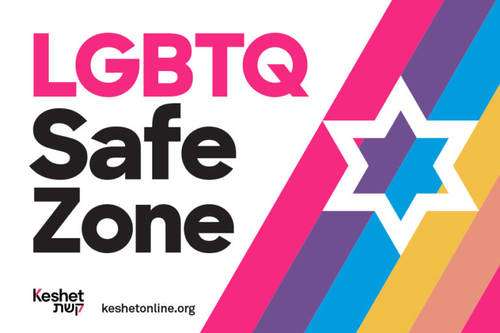Illumin8! Reflections
The word "Hanukkah" means "dedication," which is about devoting someone or something for a particular purpose. For each of the holiday's eight nights, Rabbi Knopf and several congregants offer a reflection. We hope you'll use these ideas when lighting your candles each night. And, just maybe, you'll be inspired to dedicate yourself to a higher purpose this year. Hanukkah Same'ah! Happy Hanukkah!
Night 4: On Hanukkah and Star Wars
By Rabbi Michael Knopf
It is serendipitous that a new Star Wars movie is coming out during Hanukkah. In many ways, the parallels between the Star Wars saga and the Hanukkah story are striking. Both stories tell of meager bands of freedom fighters, including farm boys turned warriors, mounting an unlikely rebellion against a much larger, better equipped, and seemingly invincible empire. In both stories, the rebels defeat their enemy, in defiance of all reasonable expectation. They draw upon an invisible force for guidance, support, strength, and resilience in their struggle against the evil empire. Both stories highlight freedom against tyranny, hope over fear, good against evil, light against darkness.
Then there is the connection between Star Wars and the Hanukkah candles. There are really only a few things that make a menorah kosher. The candles (save the shamash) have to be level and in a straight line. That way, each flame is equally important and can be distinguishable from the other flames. The menorah upholds the distinctiveness and equal status of each flame. In so doing, it reminds us that our own individuality is precious, and simultaneously, that we are all fundamentally equal.
One of the things I have always loved about the Star Wars movies is its diversity and its egalitarianism. Even today, it’s rare to find a Hollywood blockbuster where the hero isn’t a white male. Yet, for over 40 years, the Star Wars films have been replete with heroes of all colors, backgrounds, genders, shapes, and sizes. This is especially true of the current trilogy, which features a beautifully diverse lineup of protagonists. Fine, some of those characters aren’t human. But there is a basic equality implied in the diversity of the Star Wars universe. There isn’t a gender or species hierarchy in the galaxy. By and large, characters relate to each other’s internal qualities, rather than their external features. It doesn’t matter if you are male or female, black or white, human or Wookie. It just matters what side you’re fighting for, what you’re doing to advance the cause of peace and justice, and how good you are at fighting the empire.
Perhaps that’s why the only menorah candle raised or elevated above the others is the shamash, the helper candle. What distinguishes the shamash is not its external appearance, but what it does for the other candles. It helps them do what they’re supposed to do. It gives them light, and in so doing, increases the overall luminescence. The shamash’s prominence is not inherent. Just as in Star Wars, it’s earned by helping others and by spreading light.
One final thought: This newest Star Wars trilogy is set thirty years after the original Empire is defeated, yet chronicles a familiar conflict. The Rebel Alliance and the Empire are gone, with the Resistance and the First Order battle in their stead, implying that evil is never fully vanquished, that the struggle of light against dark is eternal. Historical experience affirms this artistic assertion. The Maccabees' victory was not a decisive triumph of good over evil, rather, a temporary one. The struggle is renewed in every generation. That’s why we keep lighting the Hanukkah candles year after year, to remind us that the work is not done.




